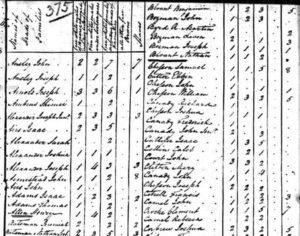At first glance at the 1790 federal census, it is easy to just throw up your hands and skip past it. It looks archaic compared to the census reports from 1850 - present time. However, it was the first Federal Census taken in the new nation and contains important information about those who lived during this revolutionary period. The 1790 census can also lead to other resources that aid you in your search for information about your ancestors.

1790 Federal Census Layout
The entire reason for a census record was to count the number of people that lived in a state. This would help determine the number of representatives for each state and the number of electoral votes per state. Since that was the main reason for the census report, the 1790 census was really just a way to count the citizens and their slaves. Keep in mind there are two main things to consider when reading the 1790 census:
- Slaves were counted because of the ⅔'s clause in the Constitution. Unfortunately, in 1790, a slave counted as ⅔'s of a person. The total number of slaves affected the amount of representatives and electoral votes of a state.
- Women did not have the right to vote, and unless they were the heads of household, they were not named.
There are 7 columns in the 1790 Federal Census:
- Heads of Families
- Free White Males 16 or older
- Free White Males under 16
- Free White Females
- All Other Free Persons
- Slaves
- Total Number of Household
Another difference in the 1790 census that does not occur in future federal census reports is that the head of households were not organized by location but by alphabetical order. This means that the people listed above and below your ancestor were probably not their neighbors.
That is a quick overview of the 1790 Census. It is an important piece of information, and if you are able to locate your ancestor, it will give you their location and point you to local historical societies that may have more information on your ancestor.
